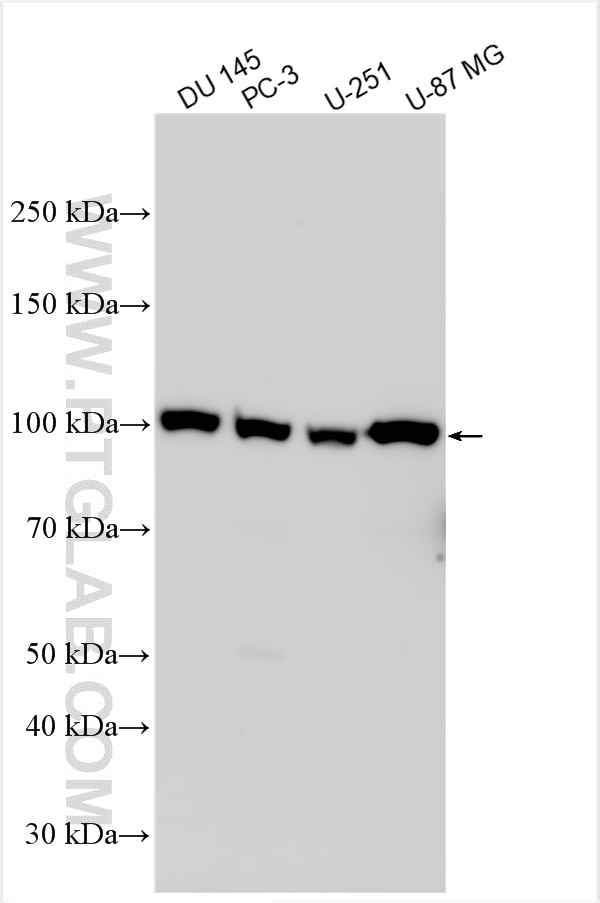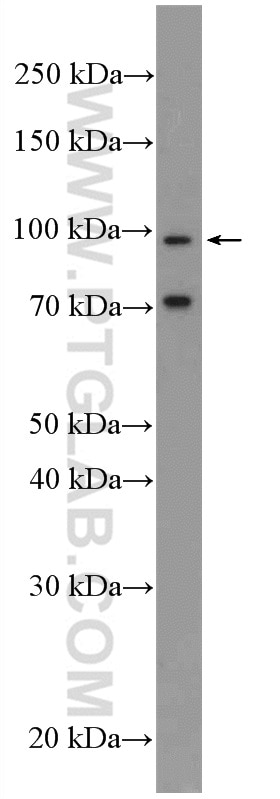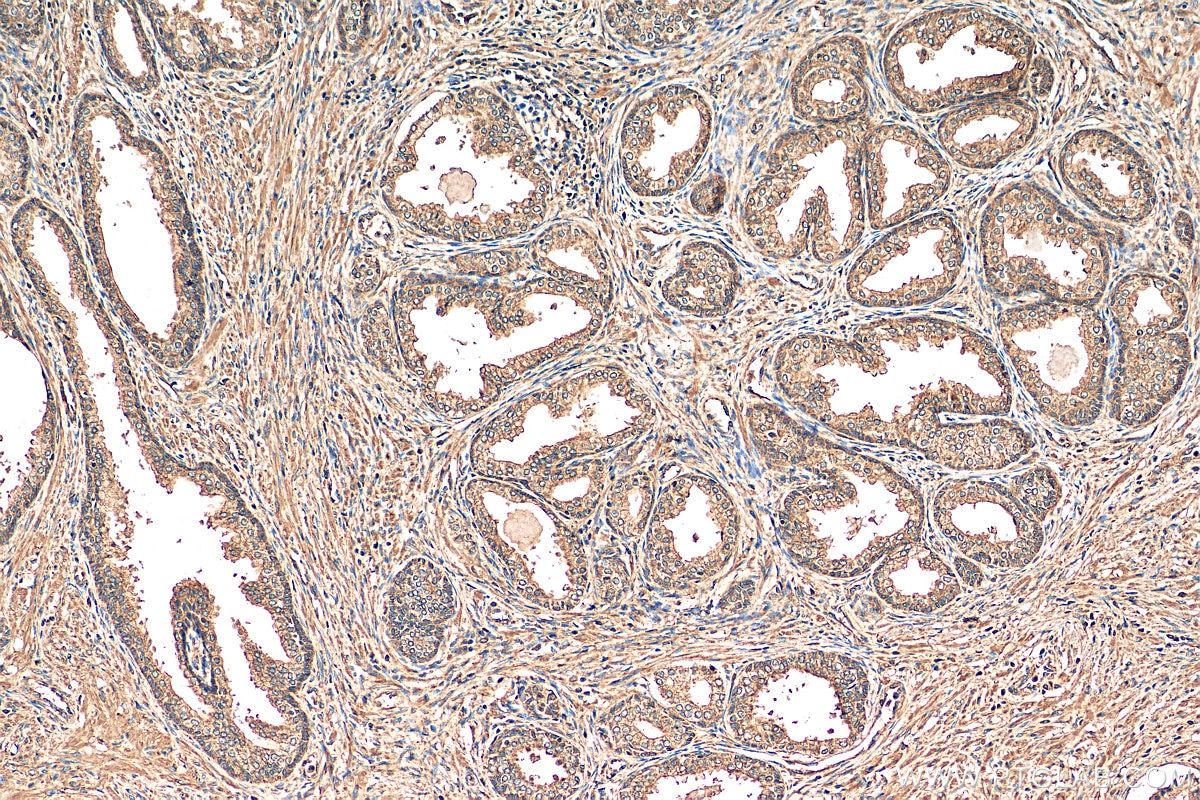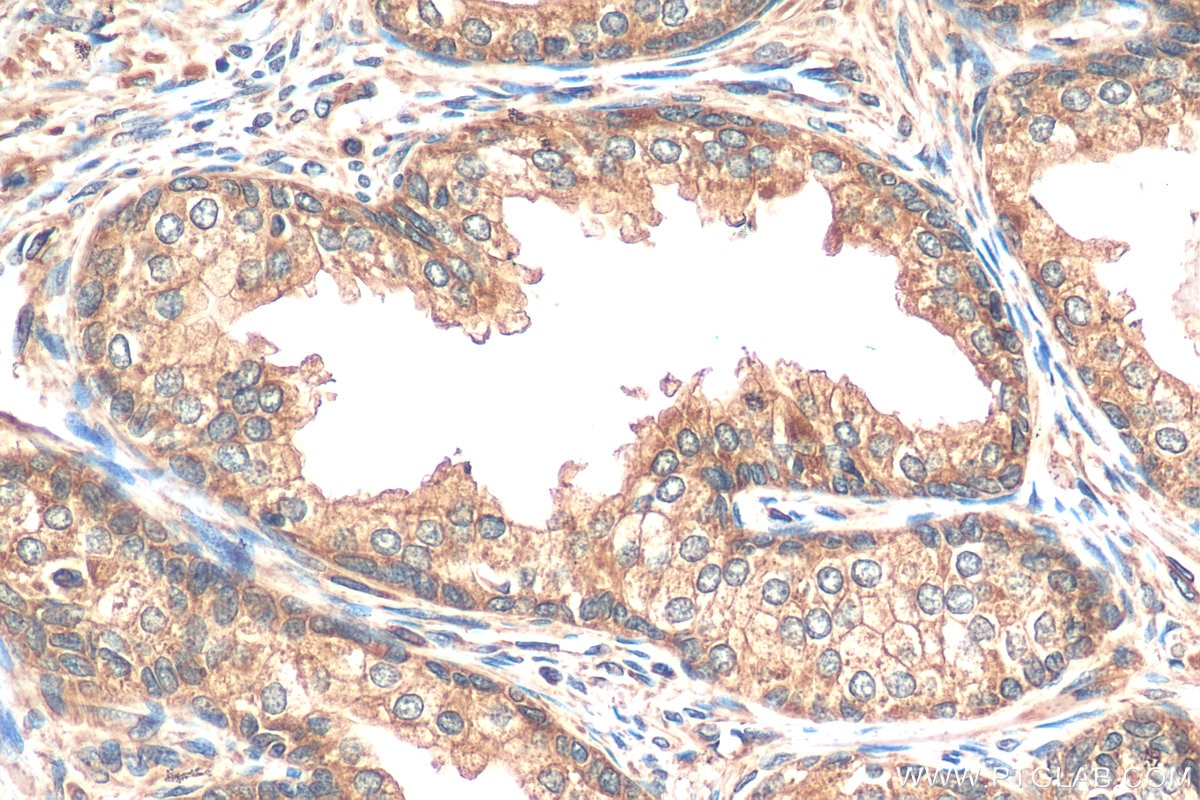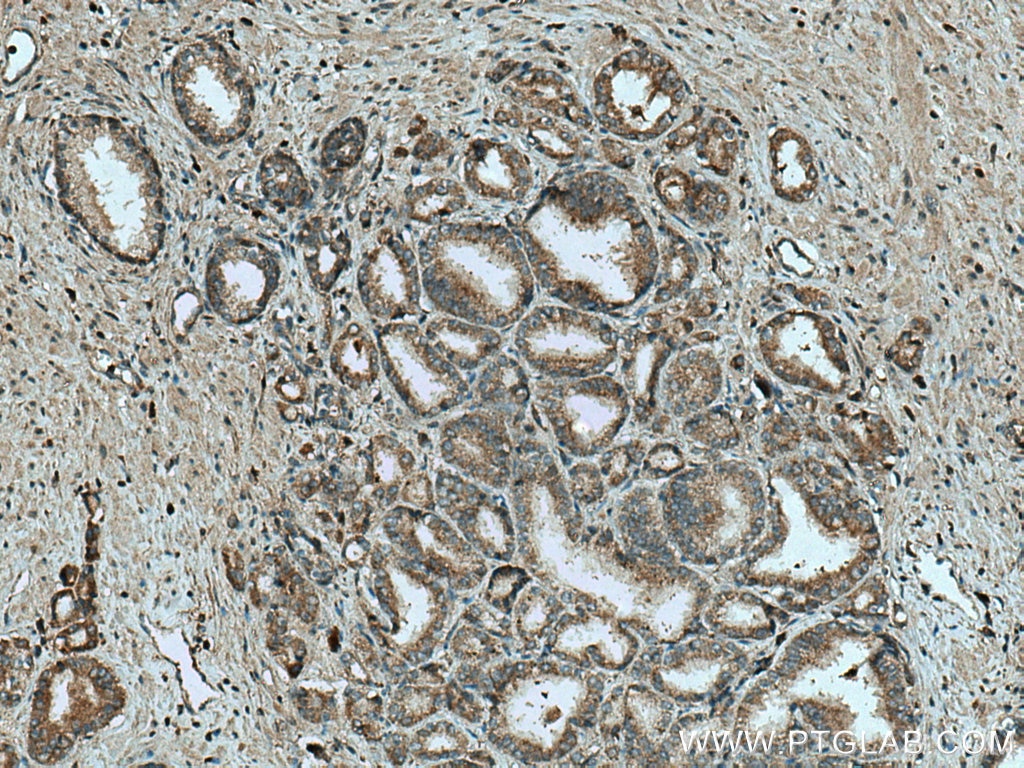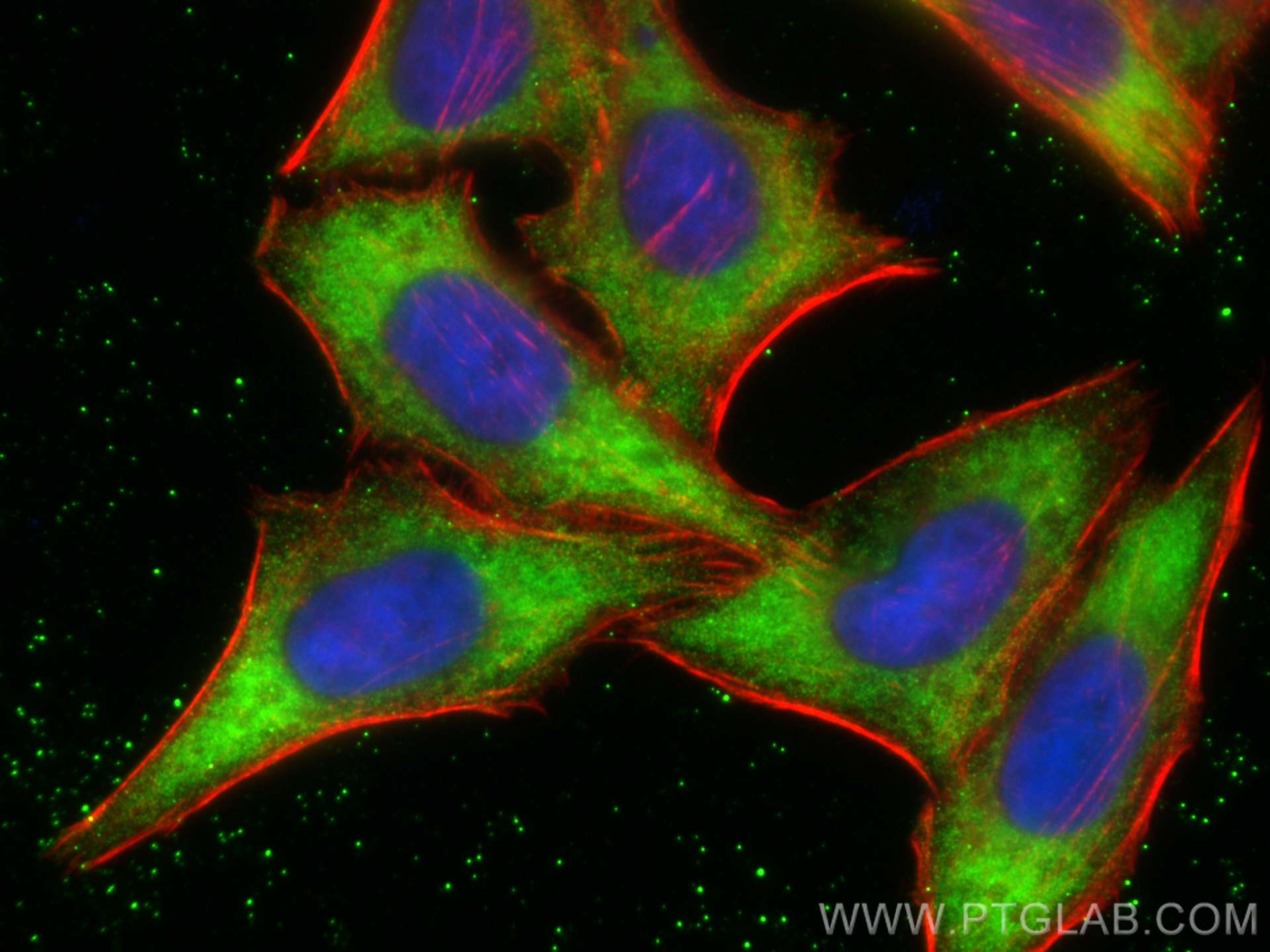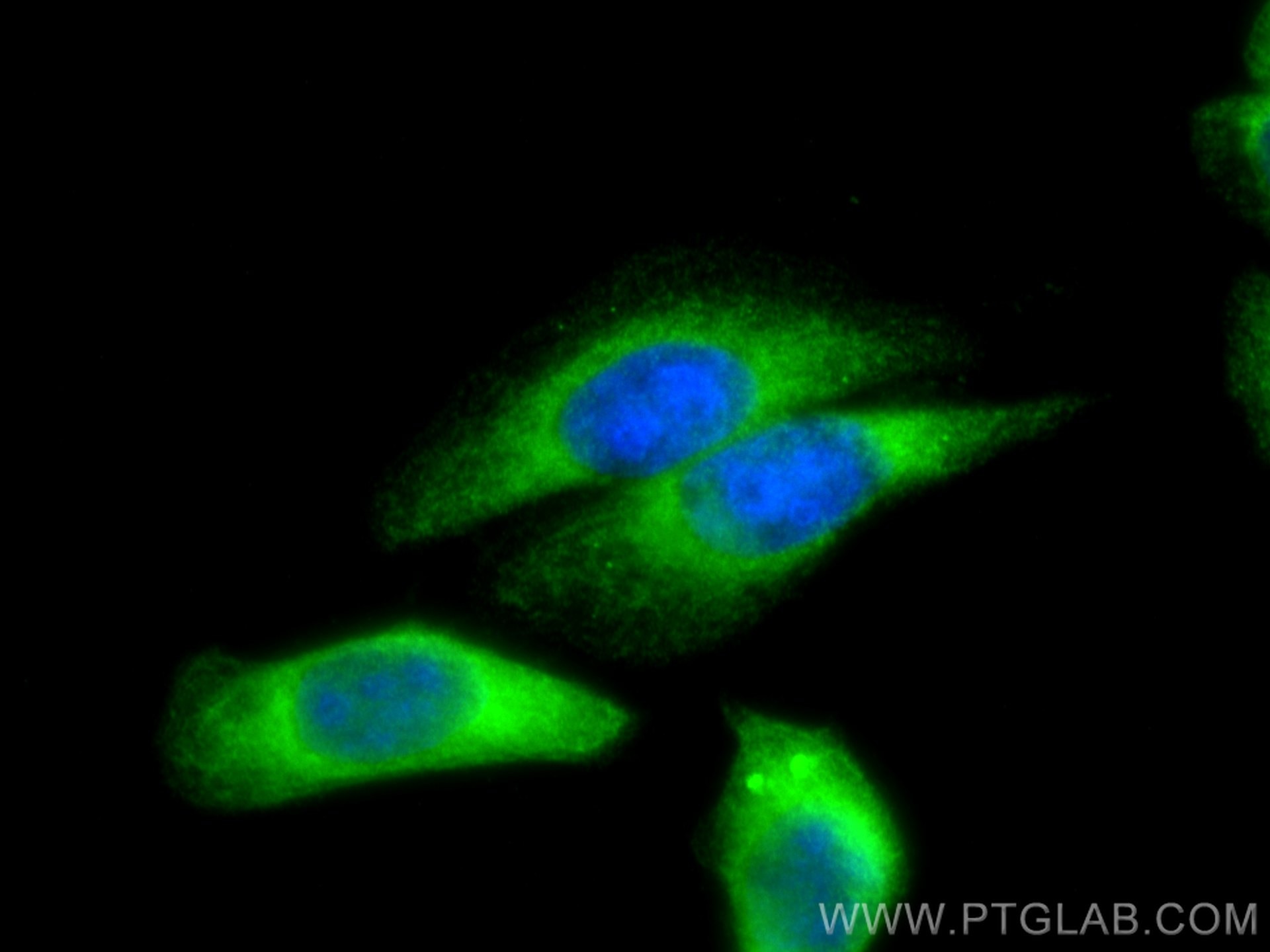- Phare
- Validé par KD/KO
Anticorps Polyclonal de lapin anti-MICAL2
MICAL2 Polyclonal Antibody for WB, IHC, IF/ICC, ELISA
Hôte / Isotype
Lapin / IgG
Réactivité testée
Humain, rat, souris
Applications
WB, IHC, IF/ICC, CoIP, ELISA
Conjugaison
Non conjugué
N° de cat : 13965-1-AP
Synonymes
Galerie de données de validation
Applications testées
| Résultats positifs en WB | cellules DU 145, cellules MG U-87, cellules PC-3, cellules U-251 |
| Résultats positifs en IHC | tissu de cancer de la prostate humain, il est suggéré de démasquer l'antigène avec un tampon de TE buffer pH 9.0; (*) À défaut, 'le démasquage de l'antigène peut être 'effectué avec un tampon citrate pH 6,0. |
| Résultats positifs en IF/ICC | cellules HepG2, |
Dilution recommandée
| Application | Dilution |
|---|---|
| Western Blot (WB) | WB : 1:2000-1:10000 |
| Immunohistochimie (IHC) | IHC : 1:50-1:500 |
| Immunofluorescence (IF)/ICC | IF/ICC : 1:200-1:800 |
| It is recommended that this reagent should be titrated in each testing system to obtain optimal results. | |
| Sample-dependent, check data in validation data gallery | |
Applications publiées
| KD/KO | See 5 publications below |
| WB | See 10 publications below |
| IHC | See 4 publications below |
| IF | See 1 publications below |
| CoIP | See 1 publications below |
Informations sur le produit
13965-1-AP cible MICAL2 dans les applications de WB, IHC, IF/ICC, CoIP, ELISA et montre une réactivité avec des échantillons Humain, rat, souris
| Réactivité | Humain, rat, souris |
| Réactivité citée | Humain, souris |
| Hôte / Isotype | Lapin / IgG |
| Clonalité | Polyclonal |
| Type | Anticorps |
| Immunogène | MICAL2 Protéine recombinante Ag4950 |
| Nom complet | microtubule associated monoxygenase, calponin and LIM domain containing 2 |
| Masse moléculaire calculée | 127 kDa |
| Poids moléculaire observé | 95 kDa, 112 kDa |
| Numéro d’acquisition GenBank | BC044577 |
| Symbole du gène | MICAL2 |
| Identification du gène (NCBI) | 9645 |
| Conjugaison | Non conjugué |
| Forme | Liquide |
| Méthode de purification | Purification par affinité contre l'antigène |
| Tampon de stockage | PBS with 0.02% sodium azide and 50% glycerol |
| Conditions de stockage | Stocker à -20°C. Stable pendant un an après l'expédition. L'aliquotage n'est pas nécessaire pour le stockage à -20oC Les 20ul contiennent 0,1% de BSA. |
Informations générales
MICALs (Molecules Interacting with CasL) are atypical multidomain flavoenzymes with diverse cellular functions. There are three known isoforms, MICAL1, MICAL2, and MICAL3, as well as the MICAL-like proteins MICAL-L1 and MICAL-L2. MICAL2 has three conserved domains: an N-terminal flavin adenine dinucleotide (FAD) binding domain, a calponin homology (CH) domain, and a Lin11, Isl-1, and Mec-3 (LIM) domain. It has been demonstrated that MICAL2 could regulate actin stress fibers and is required for normal actin organization. In addition, MICAL2-PV, a novel splicing variant of MICAL2, has been reported to be involved in cancer progression of prostate cancer. This antibody can recognize both MICAL2 and MICAL2-PV. This antibody recognizes various isoforms of MICAL2 around 90-95 kDa or 109-112 kDa.
Protocole
| Product Specific Protocols | |
|---|---|
| WB protocol for MICAL2 antibody 13965-1-AP | Download protocol |
| IHC protocol for MICAL2 antibody 13965-1-AP | Download protocol |
| IF protocol for MICAL2 antibody 13965-1-AP | Download protocol |
| Standard Protocols | |
|---|---|
| Click here to view our Standard Protocols |
Publications
| Species | Application | Title |
|---|---|---|
Theranostics Renal tubular Bim mediates the tubule-podocyte crosstalk via NFAT2 to induce podocyte cytoskeletal dysfunction. | ||
Oncogene Phosphorylation of MICAL2 by ARG promotes head and neck cancer tumorigenesis by regulating skeletal rearrangement
| ||
J Transl Med Molecule interacting with CasL-2 enhances tumor progression and alters radiosensitivity in cervical cancer
| ||
Cancer Lett MICAL2 is a novel nucleocytoplasmic shuttling protein promoting cancer invasion and growth of lung adenocarcinoma. | ||
Oxid Med Cell Longev MICAL2 Contributes to Gastric Cancer Cell Proliferation by Promoting YAP Dephosphorylation and Nuclear Translocation
| ||
Acta Physiol (Oxf) MICAL2 Promotes Breast Cancer Cell Migration by Maintaining EGFR Stability and EGFR/P38 Signaling Activation.
|
Avis
The reviews below have been submitted by verified Proteintech customers who received an incentive for providing their feedback.
FH Kincaid (Verified Customer) (06-02-2024) | H4 cell lysate run on SDS-PAGE gel. aMICAL2 diluted in 3% BSA, in TBS-tween (0.1%).
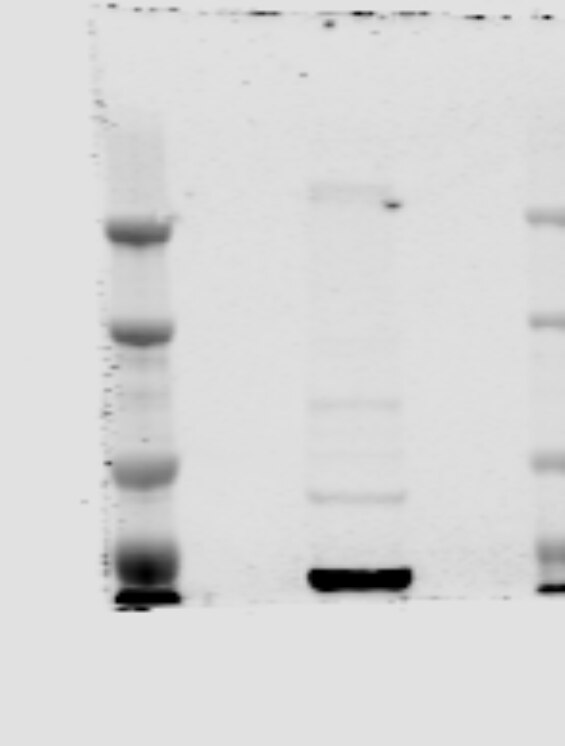 |
